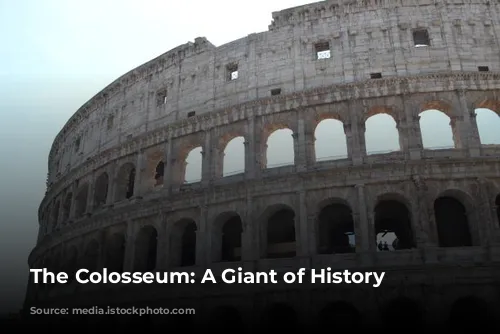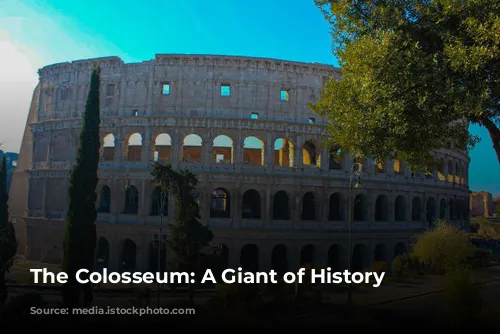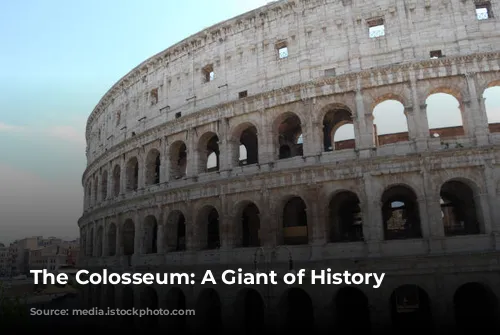The Colosseum, standing tall and imposing in the heart of Rome, is not just a monument but a living symbol of the Roman Empire’s might and grandeur. Known as the Flavian Amphitheatre, it was built by the Flavian dynasty, starting with Emperor Vespasian and completed by his son, Titus, in 80 AD. This incredible feat of engineering was a testament to the Romans’ architectural prowess.
A Spectacle Like No Other
The Colosseum’s opening was a spectacle of extravagance that lasted 100 days! The crowds were treated to breathtaking gladiatorial combats, thrilling hunts, and awe-inspiring “naumachia” – reconstructions of naval battles, with the arena transformed into a massive lake. These events were a testament to the Romans’ love of entertainment and spectacle.
The Colosseum’s Name: A Story of Mystery and Legend
But why is it called the Colosseum? The name first appeared in a medieval prophecy by the Venerable Bede, who famously foretold, “Rome will exist as long as the Colosseum does; when the Colosseum falls so will Rome; when Rome falls so will the world”. This prophecy likely linked the Colosseum’s fate to the “Colossus”, a colossal statue of Emperor Nero that stood nearby. The “Colossus” was destroyed long ago, but its name lived on, becoming synonymous with the amphitheatre.
A Marvel of Architecture
The Colosseum is an architectural marvel, an ellipse-shaped masterpiece that could accommodate an astonishing 70,000 spectators. It was constructed using arches, a cornerstone of Roman engineering, allowing the weight of the structure to be distributed evenly. Imagine it in its original glory – all white, gleaming with travertine stone. Its four floors, each boasting 80 arches, were adorned with majestic statues, creating a sight of immense grandeur.
A Glimpse Into the Past
Today, we see only the skeleton of the Colosseum – a poignant reminder of its once overwhelming presence. Time, neglect, and even plunder took their toll, leaving behind a ghost of the ancient world. During the Middle Ages, the Colosseum served as a quarry, its materials plundered to build iconic structures like Barberini Palace, Piazza Venezia, and even St. Peter’s Basilica. The holes we see in its columns are evidence of this pillaging, the remnants of iron and lead used in the construction of the ancient arena.
A Seat for Every Social Status
Entry to the Colosseum was free for all Roman citizens, but the seating was meticulously organized based on social status. The commoners sat in the top tiers, separated by gender, while the wealthy and powerful occupied the lower levels, culminating in the front row, reserved for senators, vestals, priests, and the Emperor himself.
Engineering Wonders of the Colosseum
The Colosseum was designed to provide protection from the elements, boasting an ingenious “velarium” – a massive, linen canopy that stretched over the arena. This marvel of engineering required 100 sailors from the Imperial fleet, working in perfect synchrony to the beat of a drum, to maneuver it into position, providing shade for the spectators.
The Arena: A Stage for Spectacle
The arena was the heart of the Colosseum, a stage for the gladiatorial combats, wild animal hunts, and other spectacles. The underground floors housed an intricate network of lifts, hoists, and trapdoors, used to bring animals and gladiators into the arena with dramatic effect. These “special effects” added to the excitement and awe of the events.
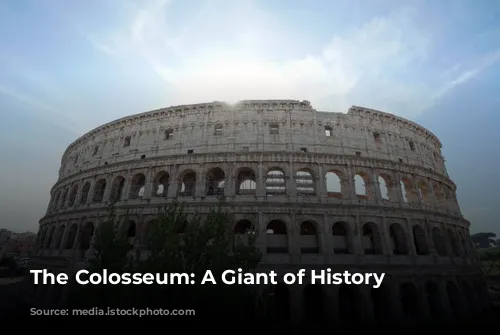
The Colosseum and Its Shows: A Connection Between Ruler and People
The events held in the Colosseum were much more than just entertainment. They connected the Roman citizens with their leader, providing a platform for public displays of power and authority. They also offered a much-needed distraction from the political turmoil of the time.
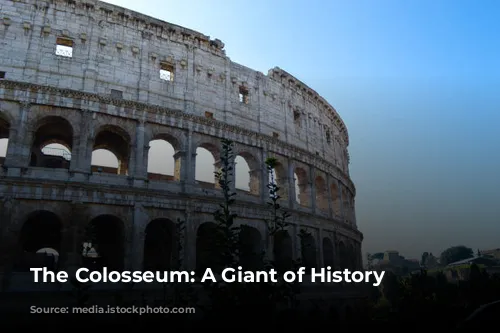
The Colosseum’s Shows: A Variety of Spectacles
The Colosseum hosted a variety of spectacles throughout the day. “Venationes” – hunts featuring exotic animals and gladiators – were a popular morning attraction, while “Silvae” – specially designed scenes recreating forests filled with animals – offered a more peaceful spectacle. The gladiatorial combats were the highlight of the day, drawing the largest crowds and providing the most exciting spectacle. While the Colosseum was often used for public executions, it’s important to note that the myth of Christians being sacrificed in the arena is false.
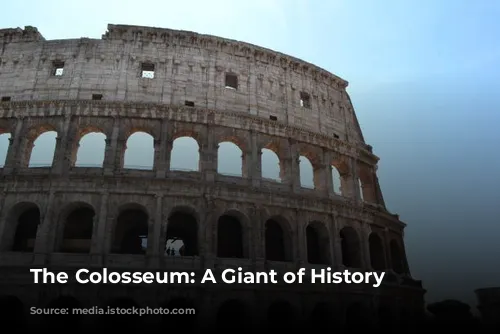
The Gladiators: More Than Just Fighters
The gladiators were the stars of the Colosseum. They were not just fighters, but skilled performers, revered by the crowds and often achieving celebrity status. Many were former prisoners of war who chose to fight in the arena, earning freedom and wealth. Others were simply seeking fame and fortune. The gladiators’ professionalism and dedication were undeniable, as they trained for years to perfect their skills. Their bravery and skill in the arena captivated the audiences.
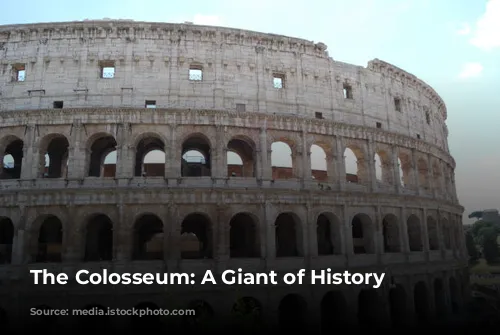
The Colosseum: A Legacy of Power and Spectacle
The Colosseum stands as a testament to the grandeur and spectacle of the Roman Empire. From the thrilling gladiatorial contests to the awe-inspiring “naumachia,” it offered the Roman people a spectacle unlike any other. This grand arena served as a symbol of power, entertainment, and the connection between the ruler and the people. Though much of its original structure is gone, it continues to capture our imaginations, reminding us of the glory and legacy of ancient Rome.
